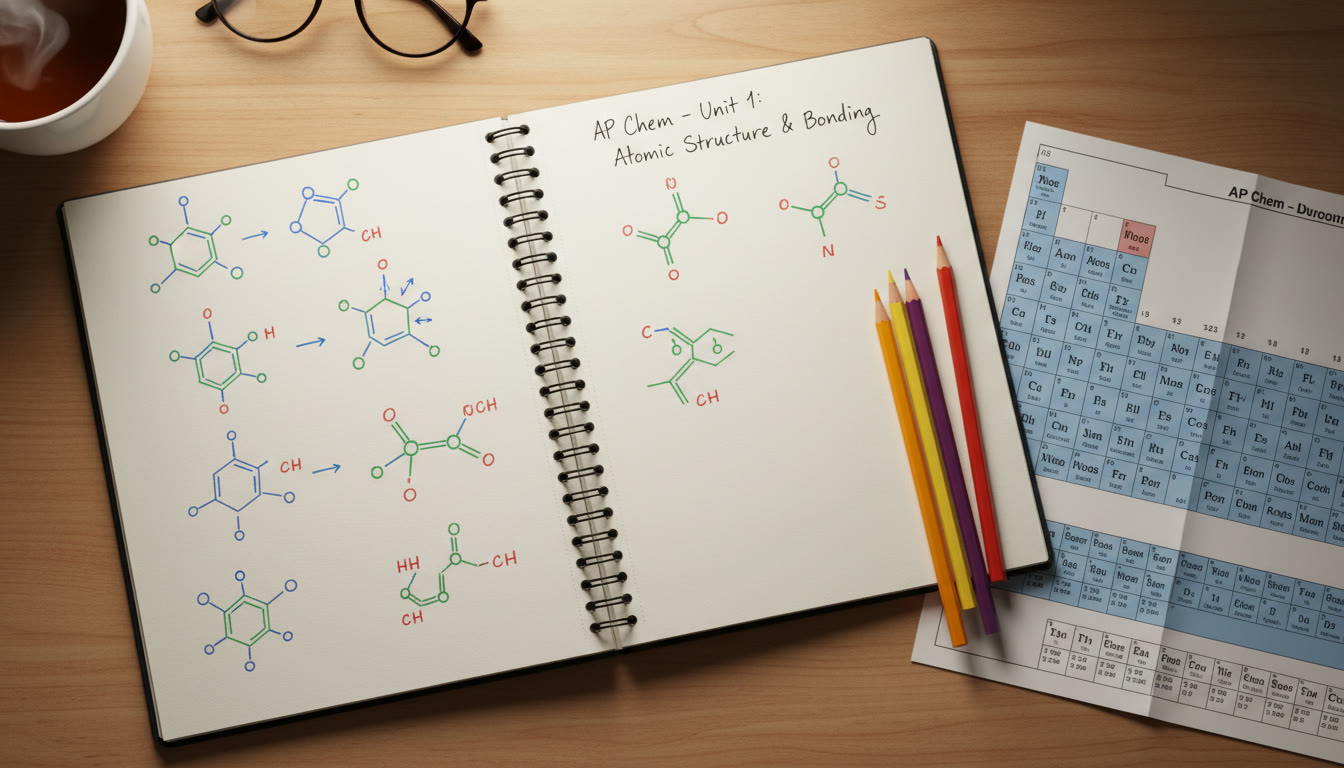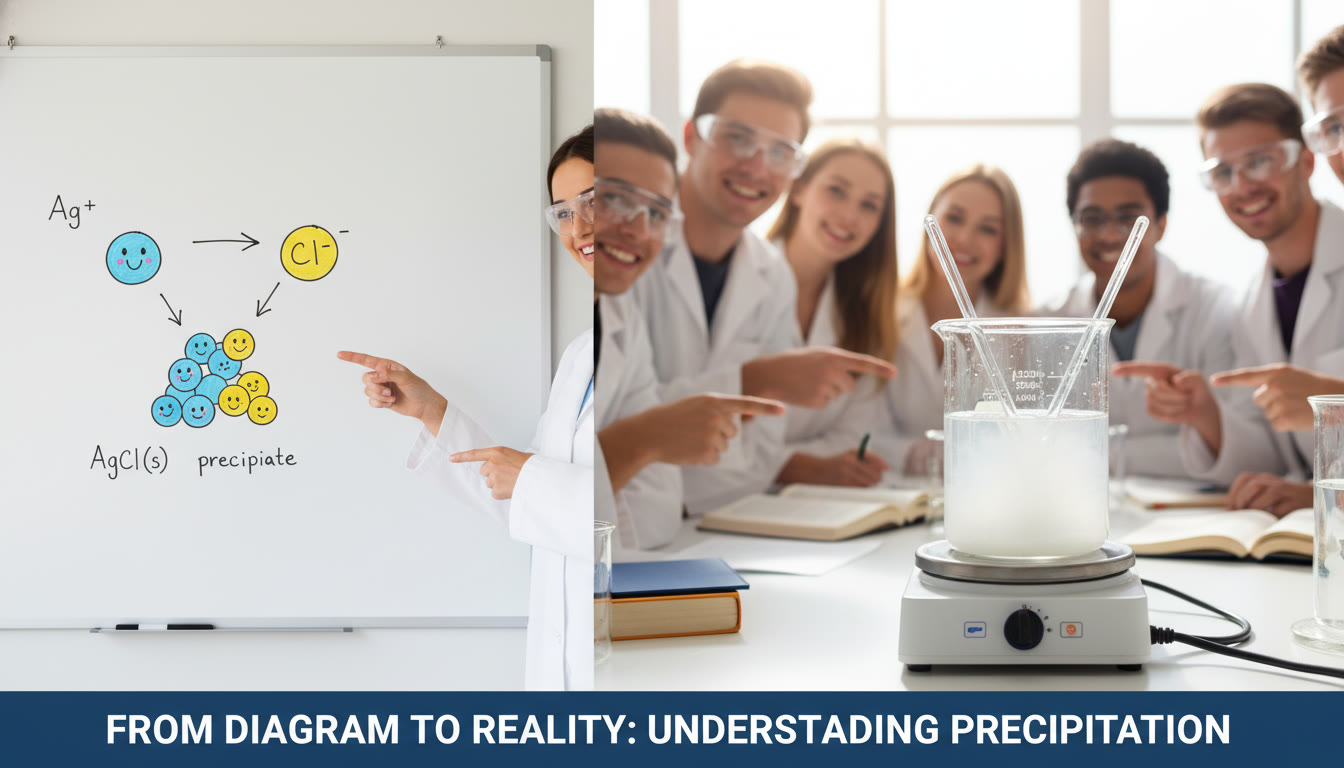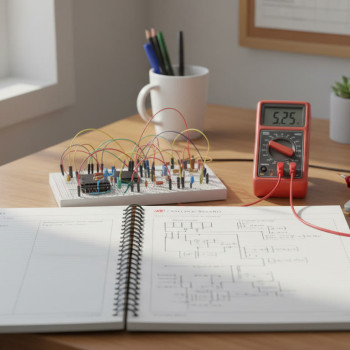Why Particulate Diagrams Matter — and Why You Should Care
When you open an AP Chemistry free-response question and see a tiny cartoon of dots, circles, or tiny molecules, you’re looking at more than an illustration. You’re looking at a language — the language chemists use to talk about what’s happening at the atomic and molecular level. Particulate diagrams compress complex ideas (identity, phase, motion, interactions, stoichiometry, concentration) into compact visual cues. The ability to interpret and describe these diagrams precisely is a powerful exam skill and a foundational scientific habit.

What a Particulate Diagram Actually Shows
At first glance a particulate diagram looks simple: shapes representing atoms or molecules, maybe arrows, maybe clusters. But each element of the drawing is meaningful. When you describe a particulate diagram on the AP exam, aim to translate the picture into clear statements that connect the micro (particles) to the macro (observable properties).
Key features to notice
- Particle type: Are the particles identical or different? (Same colored circles, different sizes, labeled A and B?)
- Arrangement and clustering: Are particles clustered, evenly spread, or in an ordered lattice?
- Separations and spacing: Large gaps often mean gas; close-packed regular arrays often mean solid.
- Motion cues: Arrows or blurred paths indicate translational motion and kinetic energy differences.
- Interactions: Dotted lines, overlap, or proximity suggest attractive forces or bonding.
- Quantity and stoichiometry: Count particles to determine mole ratios, concentration changes, or reaction extents.
Approach: A 4-Step Description Routine for Exam Answers
Adopt a consistent routine when you write your description. A short checklist keeps your answer organized and prevents common omissions.
Step 1 — Identify and name
Start by naming what each symbol means. If the diagram uses different colors, sizes, or labels (A, B, X), explicitly say so: “The larger gray circles (A) represent species A; the small white circles (B) represent species B.” This is simple but essential: the grader must immediately see you know which particle is which.
Step 2 — Describe arrangement and phase
Next, describe how particles are distributed. Use precise words: “randomly distributed,” “uniformly dispersed,” “clustered into aggregates,” “close-packed in a regular array,” or “widely separated with large empty regions between particles.” Avoid vague phrases like “looks like” — be explicit about what the distribution implies (gas, liquid, solid, solution, suspension).
Step 3 — Explain motion and energy
Link visual cues to kinetic energy. If arrows show fast, long paths, say that the particles have high average kinetic energy and move rapidly; if arrows are short or absent inside a rigid lattice, say particles are vibrating about fixed positions (lower translational energy). If two regions show different arrow lengths, compare the relative kinetic energies.
Step 4 — Connect to macroscopic properties or processes
Finish by connecting the particle-level description to what would be observed in the lab: pressure, temperature, phase change, mixing, dissolving, reaction progress, or concentration. For example, “Because particles are far apart and moving rapidly, the sample would behave like a gas and exert higher pressure at constant temperature than the same number of particles in the liquid region.” This bridge is where full credit often appears on AP prompts.
Concrete Examples — Practice Turning Pictures into Words
Examples are the fastest way to build fluency. Below are common diagram types you’ll see and sample descriptions that use the four-step routine.
Example 1: Two types of particles separated by a barrier
Imagine a box divided into left and right compartments. Left contains many small circles spaced widely with long arrows; right contains larger circles closely packed with short vibration marks.
Sample description:
- Identify: “Small circles (A) on the left and larger circles (B) on the right.”
- Arrangement/phase: “A is widely spaced and randomly distributed (gas); B is tightly packed in an ordered arrangement (solid or dense liquid).”
- Motion/energy: “Long arrows on A indicate higher average translational kinetic energy; short vibration marks on B show particles vibrate about fixed positions with lower translational energy.”
- Macro connection: “If the barrier is removed, A will diffuse rapidly, and collisions with B particles may transfer energy; overall pressure in the left compartment is higher per particle due to higher kinetic energies.”
Example 2: Mixing of two solutions represented by colored dots
Two sets of dots—red and blue—initially separated, then intermingled after shaking.
Sample description:
- Identify: “Red and blue dots represent two different ionic species or solutes.”
- Arrangement: “Initially separated, then uniformly dispersed throughout — indicating successful mixing/diffusion.”
- Motion: “Random motion due to thermal energy causes particles to intermingle until dynamic equilibrium of concentration is reached.”
- Macro: “After mixing, concentration gradients disappear; observable property changes might include color uniformity and possibly reaction if A and B react on contact.”
Common AP Exam Tasks Involving Particulate Diagrams
AP Chemistry questions often ask you to do one or more of the following: compare kinetic energies, identify phases, deduce relative temperatures or pressures, determine reaction stoichiometry from counts, or evaluate concentration and partial pressure changes. Recognizing which task is being asked helps you tailor your description.
Translate counts into mole ratios
Counting particles in a diagram is not busywork; it’s a quantitative step. If a diagram shows 6 molecules of A and 3 molecules of B reacting, state the ratio and the limiting species. Replace ambiguous language like “more A than B” with “A:B = 6:3 or 2:1; B is limiting if the reaction requires two B for every A, etc.” Precision here matters.
Use particulate clues to infer temperature or energy changes
If one region of the diagram shows more energetic motion (longer arrows), you can conclude that region has higher average kinetic energy, and therefore higher temperature if the particles are the same species. If a particle set shows decreased motion after a process, note that energy was removed (exothermic transfer to surroundings or endothermic absorption depending on context).
A Handy Table: Visual Cue → Particle-Level Meaning → Macroscopic Implication
| Visual Cue | Particle-Level Interpretation | Macroscopic Implication |
|---|---|---|
| Widely spaced particles with long arrows | High translational kinetic energy; low intermolecular interactions | Gas behavior — high pressure at high particle-average speed, fills container |
| Close-packed regular array with small vibration marks | Particles held in fixed positions; vibrational motion dominates | Solid — definite shape and volume, high density |
| Randomly arranged but close particles | Particles in contact but mobile past each other | Liquid — definite volume, no definite shape, moderate density |
| Clusters of two or more colored circles touching | Covalent or strong ionic association, likely molecules or aggregates | Indicates chemical species identity and possible reaction partners |
| Gradual decrease in particle number across space | Concentration gradient; diffusion expected | Net transport from high to low concentration until uniform |
Words and Phrases That Earn Full Credit
AP graders look for clarity, correct use of chemical vocabulary, and direct connections between particle behaviors and observable phenomena. Favor these terms and constructions:
- “Represents” and “indicates” — use to assign meaning to diagram elements.
- “Average kinetic energy” and “translational motion” — precise ways to discuss motion.
- “Uniformly dispersed” vs “clustered” — clearly contrast distributions.
- “Limiting reagent” and “stoichiometric ratio” when counting reacting species.
- Comparative language: “higher/lower average kinetic energy,” “greater/lesser attractive forces.”
Common Mistakes Students Make — and How to Avoid Them
Knowing common pitfalls helps you avoid losing easy points.
Mistake 1: Vague descriptions
Don’t write, “Particles move more,” without specifying which particles, how much more, or what that implies. Be explicit: “Particles in region A have longer arrows, indicating higher average kinetic energy than particles in region B.”
Mistake 2: Mixing up particle identity
If particles are labeled A and B, keep consistent. Don’t switch labels mid-answer. If color is the only distinguishing factor, name the colors in your first sentence.
Mistake 3: Ignoring stoichiometry
When diagrams show counts, use them. If 4 A and 2 B are present and the reaction requires 1 B per A, say which will run out and why.
Mistake 4: Forgetting to connect micro to macro
Describing particle motion is incomplete unless you say what it means for temperature, pressure, phase, or measurable lab results.
Practice Prompts with Model Answers
Practice turns understanding into speed. Try these prompts under timed conditions and then compare your answers to the model responses.
Prompt A
A diagram shows a sealed container with region X containing evenly spaced large green spheres with short arrows and region Y containing many small blue spheres with long arrows. The two regions are separated by a removable partition. Describe the particle-level differences and predict what happens to overall pressure immediately after the partition is removed.
Model answer:
- Identify: “Green spheres are species X, blue spheres are species Y.”
- Arrangement/phase: “Green spheres are close together and show short vibrational arrows, consistent with a condensed phase (solid or liquid); blue spheres are widely spaced with long arrows consistent with a gas.”
- Motion/energy: “Blue spheres have a higher average translational kinetic energy than green spheres.”
- Prediction: “When the partition is removed, blue gas particles will rapidly expand into the green region, increasing the frequency of collisions in that region and momentarily raising pressure locally until equilibrium is established; overall pressure of the container will reflect the combined kinetic energies and number of particles in the new volume.”
Prompt B
A diagram shows 8 red dots and 4 black dots. The reaction in question consumes two red dots for every black dot. Identify the limiting species and state how many of each remain after complete reaction.
Model answer:
- Identify: “Red dots are species R, black dots are species B.”
- Stoichiometry: “Reaction consumes 2 R : 1 B.”
- Limiting reagent: “With 8 R and 4 B, needed R to react with 4 B is 8 R, so both reactants are present in exact stoichiometric amounts and neither is in excess; reaction will consume all 8 R and all 4 B if it goes to completion.”
How to Use Particulate Diagrams with Lab Data and Calculations
Particulate reasoning supports calculations. For example, diagrams can justify assumptions about ideal behavior, the presence of a limiting reagent, or the expectation of a precipitate. Use the diagram to choose which equations to apply: particle counts map directly onto mole ratios; spacing and motion clues map onto assumptions about temperature and pressure.
Tip: Combine diagram interpretation with quick quantitative checks
- Count particles → convert to mole ratio assumptions if needed for stoichiometry checks.
- Visual density cues → determine whether ideal gas law assumptions are valid (gases with large intermolecular forces may deviate).
- Clustering or aggregation cues → predict whether collisions will produce a precipitate or a bonded product.
Study Routines to Get Fast and Accurate
Precision comes from practice. Try these targeted routines over the weeks leading up to the exam.
- Daily micro-practice: Spend 10–15 minutes interpreting 3–5 particulate diagrams. Time yourself and write one-sentence conclusions using the 4-step routine.
- Peer swap: Draw a particulate situation, hand it to a classmate, and see if they can describe and predict outcomes. Teaching and being questioned tightens clarity.
- Integrate with labs: After a lab, sketch particulate diagrams that represent your pre- and post-experiment states. Translate results (color changes, precipitates, temperature shifts) into particle-level explanations.
- Mock questions: Use AP-style prompts in timed conditions. Focus on economy of language — graders appreciate succinct, explicit answers.
How Tutoring and Personalized Support Can Help (Naturally)
If you find particulate diagrams tricky, targeted one-on-one guidance can speed progress. Personalized tutoring can identify the exact misconceptions you carry (mixing up kinetic energy with temperature, or misreading stoichiometry from counts) and give you tailored practice. Sparkl’s personalized tutoring approach — with expert tutors, tailored study plans, and AI-driven insights — can help you convert repeated errors into reliable habits while giving you practice prompts matched to your weak spots. A focused tutoring session can also teach you how to phrase answers in AP-friendly language, which is as important as the chemistry itself.
Exam-Time Communication: Be Clear, Be Concise, Be Correct
On exam day, time is limited. Use these stylistic habits:
- Label early: In the first sentence, state what each symbol means.
- Use numbers: If the diagram shows counts, translate them into ratios or explicit numbers rather than vague descriptors.
- Compare explicitly: When asked to compare, write both sides. E.g., “Particles in box A have higher average kinetic energy than those in box B because…”
- Link to observation: End with a sentence that connects to measurable outcomes — pressure, temperature, phase, color, conductivity, etc.
Two More Advanced Ideas to Impress the Reader (and the Grader)
When it fits the prompt, add a brief advanced-level observation to demonstrate deeper understanding.
1 — Intermolecular forces and potential energy
If the diagram suggests strong attractions (particles persistently clustered despite energy), mention that these attractions lower potential energy and could affect colligative or thermodynamic behavior. For example: “The strong clustering implies significant attractive forces; therefore, the vapor pressure of this sample would be lower than that of a sample with weaker attractions at the same temperature.”
2 — Dynamic equilibrium and reversible processes
If a diagram indicates constant exchange or reversible clustering, reference dynamic equilibrium language: “Although particles appear to aggregate, the net number in each state remains constant, indicating a dynamic equilibrium between the free and associated species.” This shows you understand that microscopic motion can be consistent with macroscopic steadiness.
Final Checklist Before You Submit an AP Free-Response
- Have you identified each particle type? (Yes / No)
- Have you described arrangement and relative motion? (Yes / No)
- Did you translate particle-level behavior into one or two macroscopic predictions? (Yes / No)
- Did you use numbers from the diagram to justify stoichiometry or limiting reagent claims? (Yes / No)
- Is your language direct and unambiguous? (Yes / No)

Wrap-Up: Think Small, Write Big
Particulate diagrams are deceptively simple. Mastering them is less about artistic skill and more about disciplined translation: see the visual cues, name the particles, describe arrangement and motion, and then bridge to observable consequences. Practice the 4-step routine until it becomes second nature. Use diagrams to check your algebra and stoichiometry quickly. Keep your language precise, and when a diagram gives you counts, use them — graders reward specificity.
If you’re building a study plan this season, mix particulate practice into your weekly routine, and consider short targeted sessions with an expert tutor who can model perfect phrasing and give you curated diagrams that focus on your weaknesses. Sparkl’s personalized tutoring model is helpful here — brief, focused sessions with expert tutors and adaptive practice can accelerate the move from “sometimes right” to “consistently precise.”
At the end of the day, chemistry is storytelling about the invisible. Particulate diagrams are your storyboard. The clearer you become at translating small-scale scenes into big-picture predictions, the more confident you’ll feel on test day — and in any lab you step into after.
Quick Practice: Two-Minute Drill
Close this tab and draw one particulate diagram: 6 small circles, 2 large circles, a dotted line between two small circles, and arrows on half the small circles. Then write your 4-step answer in 90 seconds. Repeat daily for a week. That pace builds fluency faster than one long cram session.
Good luck — and remember: precise descriptions win points. See the particles, say what they mean, and connect them to the world you can measure.



















No Comments
Leave a comment Cancel